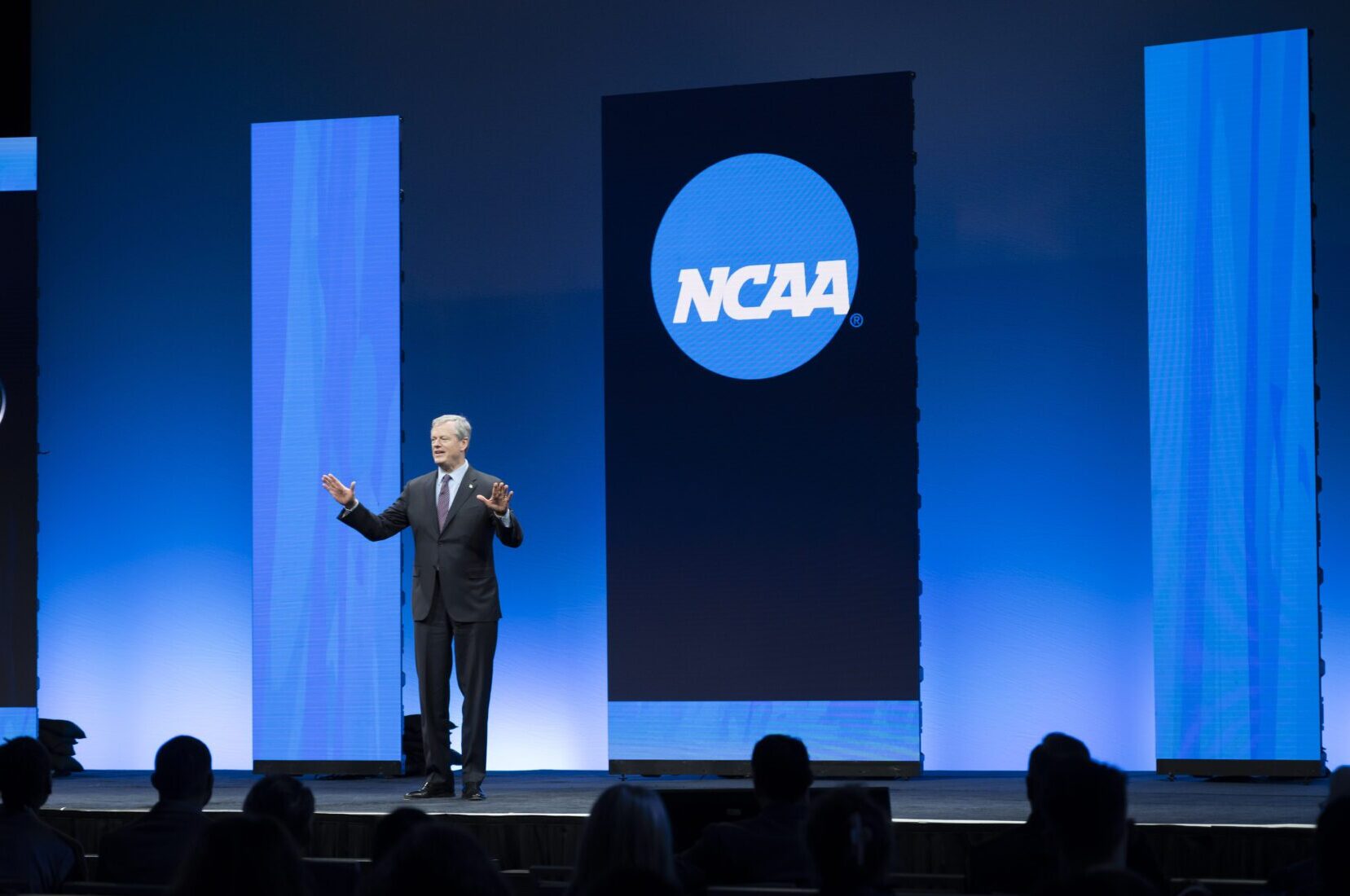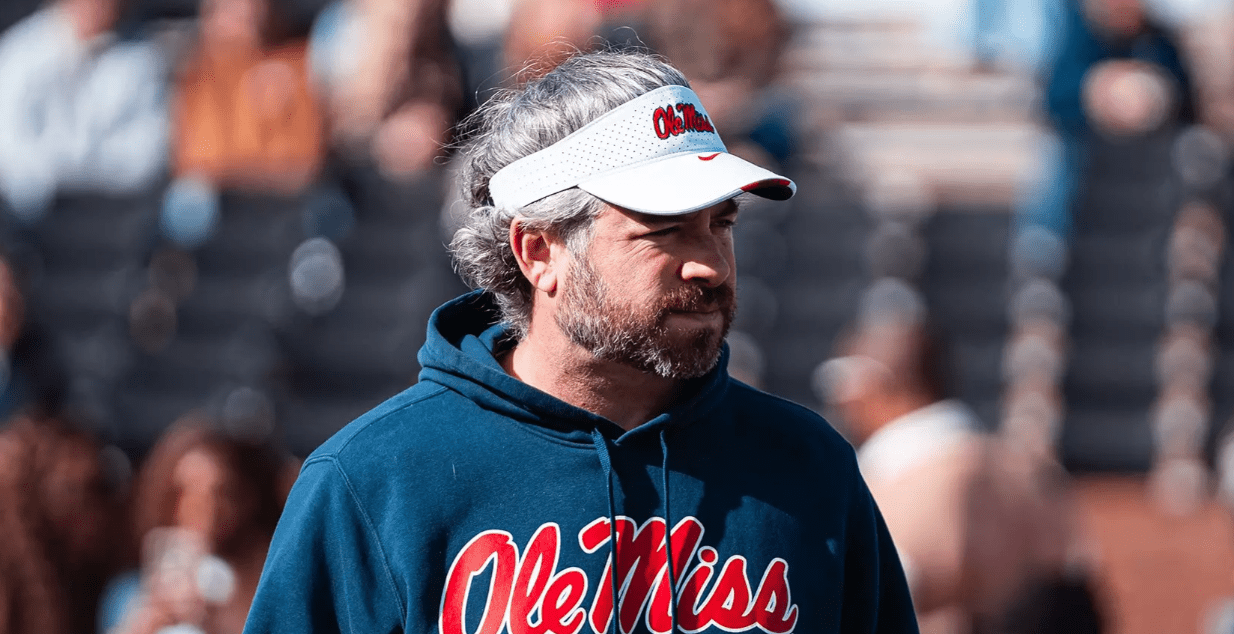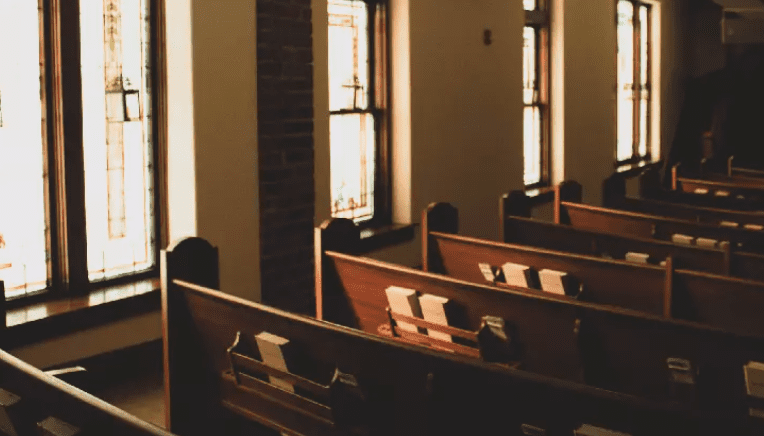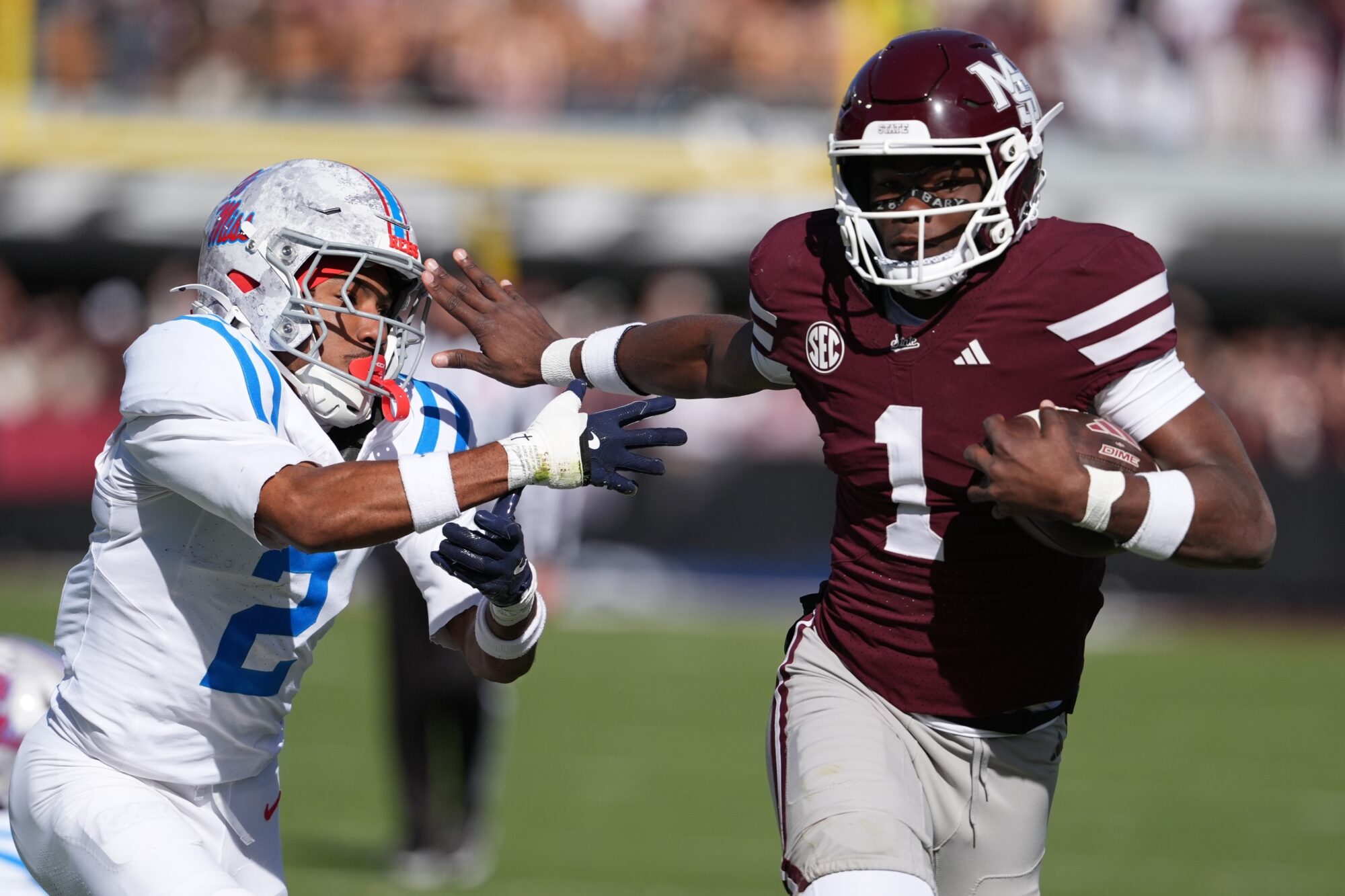
NCAA president Charlie Baker speaks during the NCAA Convention, Thursday, Jan. 12, 2023, in San Antonio. (AP Photo/Darren Abate)
For years, Ole Miss, Mississippi State and the similar smaller “big” schools have been able to keep up because of SEC revenue sharing. Under the NCAA president’s new proposal, keeping up would get a lot harder.
We’ve gotten here fast.
Name, Image and Likeness changed the landscape of college athletics by allowing players to be paid, in theory for rendering some type of service in exchange for their notoriety.
That was a little more than two short years ago.
Most college programs are still trying to wrap their arms around NIL, leaders of the games pleading for regulatory help from Congress, when came the news Tuesday that NCAA President Charlie Baker wants to forgo the pretense and just pay players – at least the schools that can afford to pay them.
The Associated Press reports that Baker has sent a letter to more than 350 Division I schools telling them of his desire to revamp Division I, which currently has 130 football teams and 351 men’s basketball teams, and allow the money makers to make their own rules. Or most of their own rules.
On the surface it looks like the NCAA is no longer latching onto the idea that all athletes are equal. They’re not because their sports are not.
Because football can generate certain amenities for its players doesn’t mean that women’s basketball players deserve all the same amenities. Nor does it mean women’s basketball should return to the stone age. Striking a balance in the new world order will be the job of some creative administrators.
According to The Associated Press, Baker’s proposal would require members of this new tier to pay at least half its athletes $30,000 a year through a trust fund.
If the proposal is enacted college sports will be market-driven. Fan interest is speaking here. The first players of the at least half to be paid will be football players because football pays the bills.
From the top a pecking order will emerge. Tier 1 schools would be able to make their own rules regarding scholarships, roster size, recruiting, transfers and NIL.
Think about what this could mean for college baseball. Tier 1 schools could choose to give the sport more than 11.7 scholarships.
The proposal would also allow schools to enter into NIL agreements with their own players, something that’s currently outlawed. That will help the rich get richer as the most popular players will be sought and will begin to supplement their $30,000 a year.
Unless the Tier 1 teams police themselves with limits that apply to everyone there will be quick separation in the new division.
The greatest collection of talent will flock annually to the teams who decide they can pay more than $30,000 a year. Some schools will pay not only half but all of their athletes.
For years, Ole Miss, Mississippi State and the similar smaller “big” schools have been able to keep up because of SEC revenue sharing.
Keeping up would get a lot harder. For the locals, this won’t be about just renaming the division and all things staying the same.
According to a USA Today database, 10 SEC schools are listed among the top 25 revenue-producing athletic programs for 2022. Ole Miss and State are not among them. The Rebels come in at No. 30, the Bulldogs at No. 40.
State produced $110,653,367 compared to $133,557,937 for Ole Miss.
No. 1 Ohio State produced $251,615,345.
Texas, Alabama, Michigan, Georgia, LSU, Texas A&M, Florida, Penn State and Oklahoma round out the top 10.
State and Ole Miss are Nos. 12 and 13 of the SEC schools listed in the database. Vanderbilt is private and chose not to tell the world of its riches.
It will be interesting to see the impact this could have on players leaving early to start professional careers.
If you’re getting $30 grand a year plus a nice NIL deal are most players in a rush to leave for the NFL? Probably not unless they’re certain first-rounders. Remember, the dollars go farther when you’re not paying for tuition, housing or food.
The transfer portal will be interesting as bidding wars abound.
The new Tier 1 would create what many have clamored for, a second Division I for schools like Arkansas State, the Louisiana hyphens so dear to me, Kent State and the others you’ve seen play at SEC schools but never host them.
Maybe somewhere in here we can simplify the naming process and call these leagues Division I, Division II, Division III and so on.











